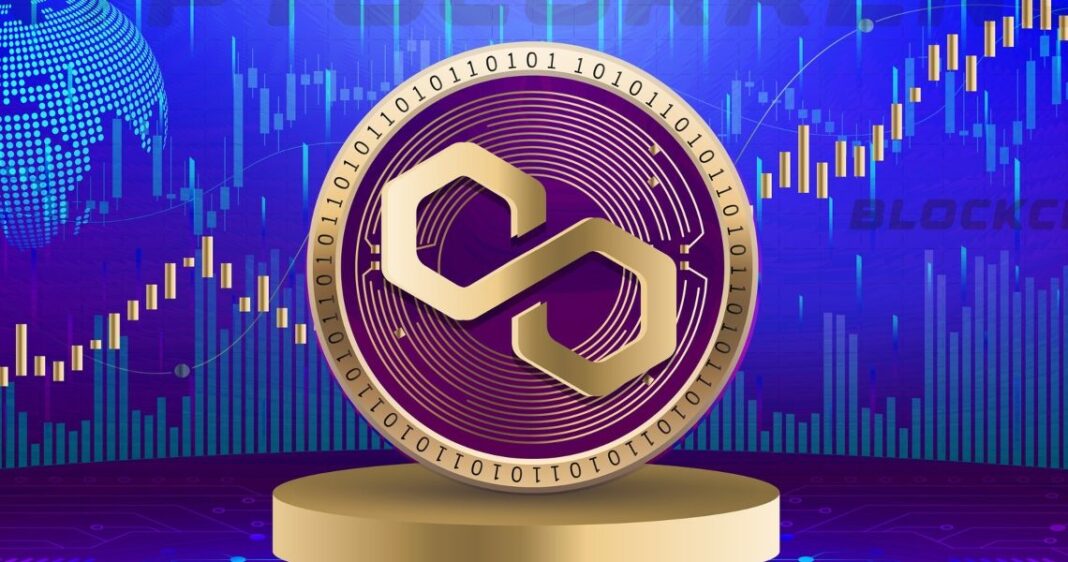What is Polygon?
Polygon (MATIC) represents a stack of protocols engineered to address Ethereum‘s scalability challenges. The network tackles these issues by processing transactions on a separate Ethereum-compatible blockchain, subsequently returning them to the main Ethereum blockchain for finalization. This method effectively reduces network congestion on Ethereum, enabling Polygon to expedite transactions and reduce transaction costs to less than a cent.
Essentially, Polygon, formerly known as the Matic network, offers a straightforward framework for both new and existing blockchain projects to operate on Ethereum without encountering scalability limitations. By leveraging Polygon, users can seamlessly interact with any decentralized application (DApp) without concerns about network congestion.
This guide provides a comprehensive exploration of the Polygon Matic network, elucidating its operational mechanisms and demonstrating how this innovative solution is streamlining the usability of Ethereum.
How does Polygon work?
The Ethereum blockchain is inherently limited in its transaction throughput, managing approximately 14 transactions per second at its base layer. Each transaction on Ethereum incurs gas fees, which can escalate significantly during periods of high network congestion, sometimes exceeding $50 to $80 per transaction. This presents a significant barrier for many users, rendering Ethereum inaccessible for everyday transactions.
Network congestion not only inflates gas fees but also slows down transaction processing, discouraging engagement with smart contracts on the blockchain. These challenges compound, resulting in substantial fees for users engaging with decentralized finance (DeFi) apps, trading or acquiring nonfungible tokens (NFTs), and executing token swaps or transfers on Ethereum.
So, how does Polygon address this issue and make transactions more affordable? By employing scaling solutions like sidechains, Polygon processes transactions off the main Ethereum blockchain. With the capability to handle up to 65,000 transactions per second, Polygon drastically outperforms Ethereum’s capacity of approximately 17 transactions per second. Furthermore, Polygon offers these transactions at a fraction of Ethereum’s average transaction fee, typically charging only pennies.
Polygon offers a suite of protocols, including zero-knowledge (zk) proofs, allowing users to select the most suitable scaling option for their needs. In cryptography, zk proofs serve to verify the validity of a statement without revealing additional information beyond its truthfulness.
Among the various integration options available on Polygon, popular choices include plasma sidechains, proof-of-stake (PoS) blockchain bridges, zk rollups, and optimistic rollups. Initially, Matic (now Polygon) adopted plasma sidechains for their lightweight and secure characteristics. Similar to sidechains, plasma chains run alongside the main Ethereum blockchain, facilitating secure asset transfers between them.
Responding to developer demand, Polygon introduced a blockchain bridge to its portfolio, enabling DApp creation on one platform without sacrificing benefits from others. By processing transaction batches on its PoS blockchain, Polygon alleviates Ethereum’s burden, enhancing its speed and efficiency.
Zk rollups process transaction bundles off-chain, creating validity proofs that are subsequently submitted to the main blockchain, reducing the data load and gas fees required for block validation. Optimistic rollups employ fraud proofs to self-execute upon detecting fraudulent transactions, slashing the stake of any parties attempting to submit fraudulent transactions.
Recognizing the diversity of application needs, Polygon acknowledges that no single solution fits all requirements. Hence, developers have the flexibility to choose the most suitable scaling solution from Polygon’s comprehensive suite of offerings.
How to Buy Polygon (MATIC)?
You can purchase MATIC on various cryptocurrency exchanges, such as Coinbase or Gemini, similar to how you would buy other popular cryptocurrencies.
To begin, you’ll need to sign up for an account and complete the identity verification process if you haven’t already done so.
Once your account is set up, you can buy MATIC using methods like bank transfers, wires, debit cards, or credit cards. Many exchanges accept U.S. dollars or other fiat currencies for purchasing MATIC, including platforms like Coinbase, Kraken, and Crypto.com.
Some exchanges offer staking services, allowing you to earn interest on your MATIC holdings while they remain on the exchange.
Additionally, MATIC can be acquired on decentralized exchanges such as Uniswap.
Depending on your crypto wallet, you might have the option to use a fiat on-ramp payment processor to directly purchase MATIC. Alternatively, you may need to buy a different token first and then swap it for MATIC, possibly incurring a fee in the process.
For acquiring MATIC on the Polygon Mainnet, you can utilize the official Polygon Bridge for depositing and withdrawing MATIC once you connect an eligible wallet. Certain wallets, like the Crypto.com DeFi Wallet app, may also allow you to receive MATIC directly from the Polygon network.


